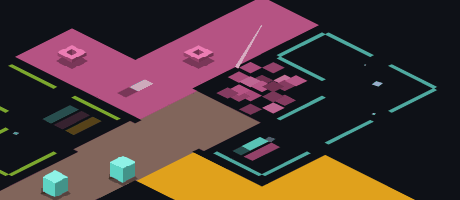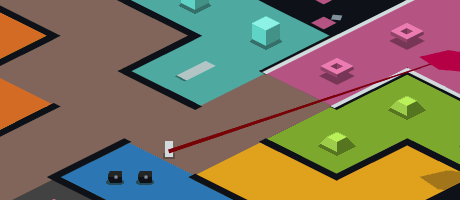terça-feira, 25 de fevereiro de 2014
One truth about game design
terça-feira, 18 de fevereiro de 2014
The delicate balance between learning curve and meaning on games
Videogames are, undoubtedly, leading and intertwining landmarks of contemporary culture. From countless consoles/devices, gamers are increasingly experiencing worlds of fantastic narratives. From simple mobile games like Flappy Bird (Gears Studios, 2014) to complicated Playstation 4 and Xbox One titles, we can see players discovering new contents, communities and learning new stuff from these platforms.
In this complex scenario, multidisciplinary crews are necessary to establish the delicate balance between two essential points: 1) the learning curve: or how each stage of the game is connected, creating a challenging experience – level by level – to the players; 2) the meaning: or how the experience of the game will emotionally “touch” the player in his/her social context.

As Bienvenido and Ruiz (2013, p.225) say, “during play activity it is possible to maintain the ability to learn and grow, training our individual and collective skill to adapt to the evolving condition of the surrounding context. In light of that, we believe it is crucial to harness a conscious and aware design process able to lead to a ludic meaningful experience activity that, on its side, is able, on the one hand, to engage and involve players, and on the other hand, to transmit meaningful concepts and prompt interesting contexts”.
In this discussion, it’s important to remember the social aspect of gaming culture. Especially in times of extreme connection between individuals we can see the strong role of social interaction between gamers. As Bartle (2014, p.11) reminds us “indeed, it could be argued that all games – even single-player games – are at least in some way social, because the people who play them are framed by the society in which they live. Subjectively, though, certain types of game are ‘more social’ than others because they involve more people interacting more often in more ways”.
I don’t intend to synthetize such complex subject in a simple blog’s post, but I think it’s a good starting point to broaden the discussion. Now, on to your opinion!
References:
BARTLE, Richard. Design principles: use and misuse. IN: QUANDT, Thorsten; KRÖGER, Sonja (Eds.). Multiplayer: The Social Aspects of Digital Gaming. New York: Routledge, 2014
BIENVENIDO, Héctor Puente; RUIZ, Marta Fernández. User generated content: A situated production of video walkthroughts on Youtube. IN: HUBER, Simon; MITGUTSCH, Konstantin; ROSENSTINGL, Herbert; WAGNER, Michael G; WIMMER, Jeffrey (Eds.). Context Matters! Proceedings of the Vienna Games Conference 2013: Exploring and Reframing Games and Play in Context. New Academic Press: Viena, 2013.
In this complex scenario, multidisciplinary crews are necessary to establish the delicate balance between two essential points: 1) the learning curve: or how each stage of the game is connected, creating a challenging experience – level by level – to the players; 2) the meaning: or how the experience of the game will emotionally “touch” the player in his/her social context.

As Bienvenido and Ruiz (2013, p.225) say, “during play activity it is possible to maintain the ability to learn and grow, training our individual and collective skill to adapt to the evolving condition of the surrounding context. In light of that, we believe it is crucial to harness a conscious and aware design process able to lead to a ludic meaningful experience activity that, on its side, is able, on the one hand, to engage and involve players, and on the other hand, to transmit meaningful concepts and prompt interesting contexts”.
In this discussion, it’s important to remember the social aspect of gaming culture. Especially in times of extreme connection between individuals we can see the strong role of social interaction between gamers. As Bartle (2014, p.11) reminds us “indeed, it could be argued that all games – even single-player games – are at least in some way social, because the people who play them are framed by the society in which they live. Subjectively, though, certain types of game are ‘more social’ than others because they involve more people interacting more often in more ways”.
I don’t intend to synthetize such complex subject in a simple blog’s post, but I think it’s a good starting point to broaden the discussion. Now, on to your opinion!
References:
BARTLE, Richard. Design principles: use and misuse. IN: QUANDT, Thorsten; KRÖGER, Sonja (Eds.). Multiplayer: The Social Aspects of Digital Gaming. New York: Routledge, 2014
BIENVENIDO, Héctor Puente; RUIZ, Marta Fernández. User generated content: A situated production of video walkthroughts on Youtube. IN: HUBER, Simon; MITGUTSCH, Konstantin; ROSENSTINGL, Herbert; WAGNER, Michael G; WIMMER, Jeffrey (Eds.). Context Matters! Proceedings of the Vienna Games Conference 2013: Exploring and Reframing Games and Play in Context. New Academic Press: Viena, 2013.
Marcadores:
games,
gaming concepts,
learning curve,
meaning
terça-feira, 11 de fevereiro de 2014
Rymdkapsel: a new way to observe tower defense games
Today I played a ‘meditative space strategy game’ named Rymdkapsel. Rymdkapsel is a game in which you take command of a space station and its minions. You will have to plan your expansion and manage your resources to explore the galaxy. In its essence, it’s a tower defense game with a minimal interface created using isometric perspective.
As Nitsche says (2008, p.99) “isometric views eliminate any distortion of the depicted shape caused by the perspective. (…) True isometric views are an artistic construct and always include a level of abstraction, because the real world is not perceived in that way”.

In the game mechanics you need to manage the different random pieces to construct the scenario (very similar to Tetris). It’s necessary to construct corridors, extracting devices, food providers, cannons etc. It’s important to explore the space attaching your ship to other platforms. You have few minions in your ship, and a good management is essential to keep it working.
The game has a unique and immersive environment structured with a relaxing soundtrack, minimal sound effects and simple colorful graphics.

Check the gameplay below:
Rymdkapsel is a mobile game (for iOS and Android) by Martin Jonasson with music by Niklas Ström. Click here to visit the official site.
Reference:
NITSCHE, Michael. VIDEO GAME SPACES - image, play and structure in 3D worlds. Massachusetts: MIT Press, 2008
As Nitsche says (2008, p.99) “isometric views eliminate any distortion of the depicted shape caused by the perspective. (…) True isometric views are an artistic construct and always include a level of abstraction, because the real world is not perceived in that way”.

In the game mechanics you need to manage the different random pieces to construct the scenario (very similar to Tetris). It’s necessary to construct corridors, extracting devices, food providers, cannons etc. It’s important to explore the space attaching your ship to other platforms. You have few minions in your ship, and a good management is essential to keep it working.
The game has a unique and immersive environment structured with a relaxing soundtrack, minimal sound effects and simple colorful graphics.

Check the gameplay below:
Rymdkapsel is a mobile game (for iOS and Android) by Martin Jonasson with music by Niklas Ström. Click here to visit the official site.
Reference:
NITSCHE, Michael. VIDEO GAME SPACES - image, play and structure in 3D worlds. Massachusetts: MIT Press, 2008
Marcadores:
game,
gaming concepts,
mobile,
Rymdkapsel,
space,
tower defense
Assinar:
Postagens (Atom)

